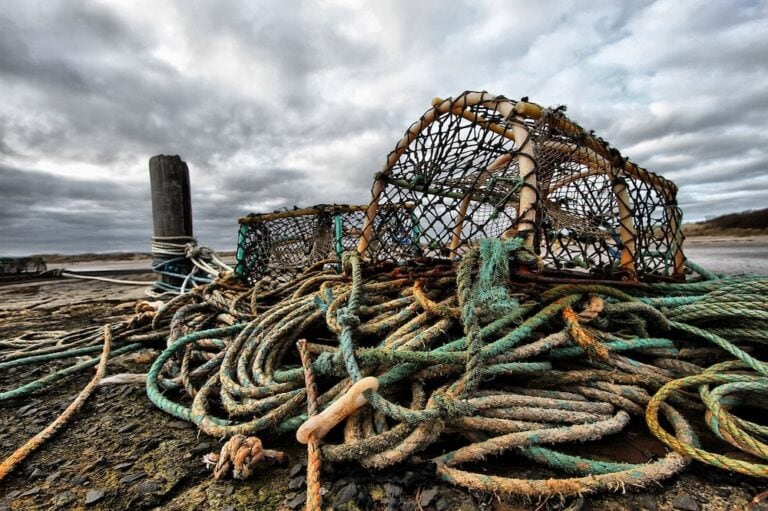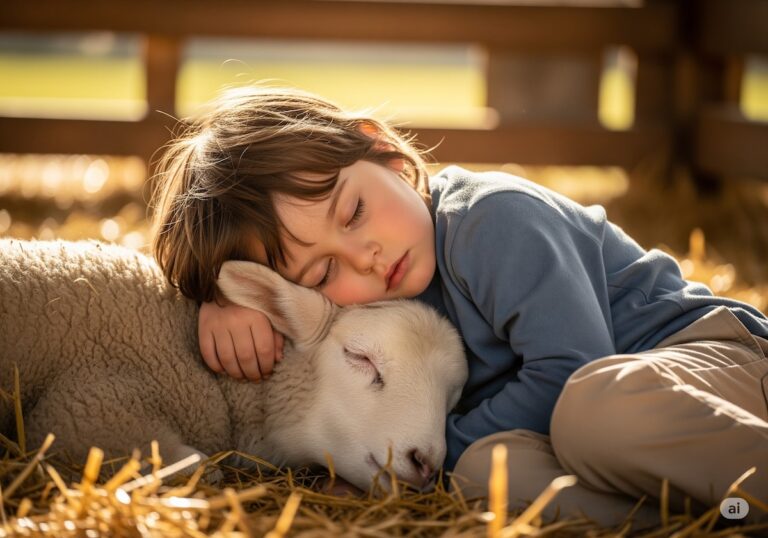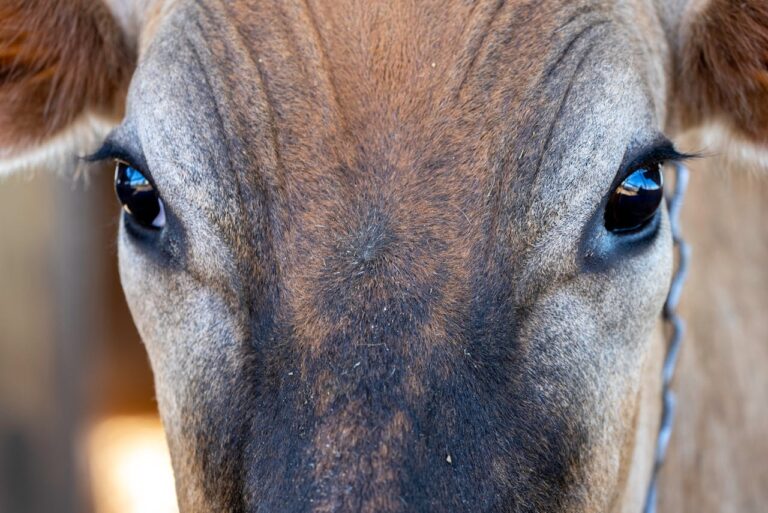A recent announcement from a Danish zoo has ignited a fiery ethical debate, raising important questions about how we interrelate with our fellow animals. The Aalborg Zoo has issued a public appeal for people to donate unwanted rabbits, guinea pigs, and other small animals, to be used as food for the zoo’s captive predators.
The public response to the request has been one of widespread outrage and ethical condemnation. The main point of the objection is not against the killing of innocent beings in a general sense, but specifically against the objectification of those who were once members of human families.
The idea of surrendering a vulnerable being who has been welcomed into the family home, to be fed to a lion or a wolf is deeply disturbing to many. After all, the bond with a nonhuman companion can be a powerful one, built on trust, responsibility, guardianship, and care. To betray that trust by abandoning someone to be used as a meal feels like a particularly profound moral violation; a betrayal of this sacred bond, and a dangerous blurring of the line between valued companion and disposable commodity.
But while it’s true that some domesticated animals are cherished as members of the family, the fact is that as a society, we do view “pets” as disposable commodities. Recent estimates suggest that over five million dogs and cats enter shelters annually, and over 600,000 were killed in those shelters in 2024. A high percentage had been surrendered by families. One common reason given is that the household in question simply had “too many pets.”
Rabbits, guinea pigs, hamsters, and other small animals like those requested by the zoo, are frequently surrendered to shelters after being bought on a whim. The “Easter effect” is a well-known phenomenon in which certain animals, particularly rabbits, are purchased as gifts for children and later abandoned when the novelty wears off and the family realizes the significant commitment involved. These “pocket pets” have a longer average length of stay in shelters compared to dogs and cats, and due to their specific care needs and the overwhelming number of dogs and cats, small animals often have a low likelihood of adoption, putting them at high risk of being “euthanized*.”
*Euthanasia is defined as the practice of painlessly putting to death persons suffering from a painful and incurable disease or an incapacitating physical disorder. It is not an appropriate term in the case of healthy individuals put to death simply because they have nowhere to go and no one to care for them. Nor is it an appropriate term in the case of the zoo executing healthy nonhuman beings to be used as food (presumably in a gas chamber, as flesh is considered unfit for consumption when lethal injection is used.)
These lives discarded every day in unfathomable numbers are the direct result of an overall attitude of apathy toward the interests of our fellow animals. The solution lies not in finding a “responsible” way to dispose of their bodies, but in ending the culture of breeding and buying and instead, promoting responsible guardianship of those already in need of care.
The harsh reality of shelter deaths adds a layer of complexity to the debate about the Danish zoo. It invites us to examine why we are so outraged by a deliberate, public death for some, while often ignoring the systematic killing of hundreds of thousands of others. The core issue is the same: in both cases, somebody’s life is considered to be expendable.
The “No Waste” Argument: A Profound Disconnect
In response to criticism about its program, the zoo has claimed that its intention is to make sure “nothing goes to waste.” This language, which is more appropriately used for inanimate objects, is deeply offensive when applied to a sentient being.
The word “waste” implies that an item’s purpose has been unfulfilled. We might talk about wasting food or plastic, but we do not speak of wasting the body parts of a human being or a non-human being who is viewed as an individual. This is because we recognize that someone’s value is not based on what they can be used for, either before or after death.
Consider the powerful emotional response that would be triggered by the suggestion that we “not waste” the remains of a beloved family dog who passed away naturally. The idea of using her skin to make a purse, or her bones to make china, would be repulsive to most people. Why? Because the living animal was not seen as a resource, but as somebody with a personality, a name, and a history. To even consider using her remains in such a way would be to deny her identity and reduce her to a mere object.
This is not the first time a Danish zoo has been at the center of an ethics controversy. Several years ago, the Copenhagen Zoo faced global outrage after it fed to the zoo’s lions the remains of a giraffe named Marius, after first dissecting his body to provide a public anatomy class attended by families and children.
The decision to kill Marius was based on recommendations for maintaining a “healthy” giraffe population in captivity. Marius’s genes were already well-represented in the program, and allowing him to breed would have apparently increased the risk of inbreeding. The zoo’s scientific director described the zoo’s actions toward Marius as a way to provide a natural diet for the captive predators while also providing an “educational opportunity.”
A Lesson in Apathy: The Unintended Education of a Zoo
Zoos often position themselves as educational institutions, but in these instances, the education is a lesson in apathy and the objectification of nonhuman animals. These acts normalize the idea that a being’s value can be reduced to his or her utility as a scientific specimen or a food source; that a sentient being’s life is secondary to institutional interests.
When the killing of healthy individuals is framed as necessary and even beneficial, it teaches a child that it’s acceptable to intellectualize away the destruction of another animal’s life and one’s inherent compassion for them. The end result is not an increased respect for the natural world and its inhabitants, but a learned indifference to the suffering of others.
This is, of course, a reinforcement of the contradictory messages children receive daily. The example of Marius the giraffe, or the use of nonhuman companions as prey might seem especially horrifying examples to set for children, but they are a parallel to the “education” they receive on an ongoing basis as they are taught to care for and respect certain animals, while at the same time, being shown that other animals exist to be used for human benefit, or even to be killed and eaten for lunch or dinner. This is severely damaging to a child’s developing sense of empathy, as well as to their understanding of integrity.
Zoos and the Denial of Individual Rights
The controversy surrounding the Aalborg Zoo’s request is not merely an isolated incident of poor judgment. It is a symptom of a deeper, more troubling issue inherent in the very nature of zoos as institutions. At their core, zoos use nonhuman beings as a means to an end, rather than recognizing them as sentient individuals with fundamental rights.
This commodification manifests in several ways:
• As Money-Making Units: Nonhuman animals are essential to the business model of a zoo, which relies on ticket sales and other revenue from visitors. The captive animals themselves are a product, and the zoo’s success is tied to its ability to display them in a way that attracts and entertains the public.
• As Genetic Resources: Zoos often justify their existence through conservation efforts, but even this purportedly noble goal can be a form of objectification. Those who are housed there are managed as components of a larger genetic pool, and their individual lives are often subordinate to the interests of the institution that manages them as a species. This is why healthy individuals who are deemed “surplus” or “genetically unsuitable” for breeding programs are sometimes “culled”. This practice, exemplified by the public dissection of the giraffe Marius in Copenhagen, shows that the animal’s right to life is secondary to his or her utility as a genetic resource.
For animal rights advocates, this is the fundamental flaw of the zoo industry: an institution that sees sentient beings as things to be managed, displayed, and even consumed, cannot also be an institution that truly respects their intrinsic value and right to a life free from human exploitation.
How Are Captive Carnivores Usually Fed?
Those who support the zoo while being offended by this particular decision should ask themselves: Is there a real ethical distinction between this and the standard methods for obtaining food for captive carnivores?
When a zoo isn’t requesting that rabbits and guinea pigs be handed over by the public, they will be killing other sentient beings for the exact same purpose. Known as “feeder animals,” the majority are bred and raised in commercial facilities which often have pitiful welfare standards. These include rabbits, guinea pigs, hamsters, and gerbils: the exact same species that families take into their homes.
For larger carnivores, many zoos also use horses, goats, and cows purchased from farms, including those who are older, “unproductive,” or those who have been “culled.” These might include older dairy cows that can no longer produce sufficient milk to be economically valuable, horses that are too old to work or ride, or are otherwise no longer desired, male calves from dairy farms, who are not needed for milk production, and older or “unproductive” sheep and goats, particularly those who are not “useful” for breeding or wool production.
On small family farms, often heralded as the “gold standard” of humane farming, children raised in these families can form profound bonds with those they help raise, caring for them from birth, giving them names, playing with them in the fields, and even cuddling with them and falling asleep with limbs intertwined. When they learn that these same individuals will sooner or later be killed, the experience forces children to struggle with the traumatizing reality that when a nonhuman animal’s economic value takes precedence over his or her inherent value, their life will be violently taken from them. When their remains come out of the oven to be served onto dinner plates, chances are that the same child who once saw these fun, affectionate beings as her friends will be admonished not to cry, and will, over time, eventually be conditioned to chew and swallow without a second thought.
A Call to End the Commodification of Life
The controversy surrounding this story is more than a fleeting news event; it is a moment that exposes the deep flaws in our relationship with our fellow animals in general. The ethical line we draw around nonhuman life is often arbitrary and deeply flawed. Our outrage should not be directed at this one story alone, as the incident could serve as a catalyst for a broader recognition that a truly ethical stance must extend beyond our own prejudices and our own interests, and recognize the sentience and right to life of all animals, regardless of their species or their role in our society.
The zoo’s request struck a nerve, but the response exposes our collective hypocrisy. The reason for our offense is not because we generally object to the use of innocent animals for such a purpose. There is not a sentient being anywhere who would willingly go into the jaws of a predator, but somehow we still want the wolves to be fed – just not with my rabbit, not with my neighbor’s guinea pig, not with my child’s chinchilla. We are offended not because the lives of those other beings mean something to them, but because they mean something to us.
The appropriate response is not to seek a different, less emotionally charged source of food for zoo predators. It is to reexamine the very notion that any sentient life should be treated as a resource to be managed, traded, consumed, or otherwise used for human utility or convenience.
This means we must move beyond a selective compassion that mourns the death of a rabbit named Willow or a hamster named Bella, but ignores the systematic killing of countless other, equally sentient animals, including the incalculable number needlessly killed every day for food, fabric, experimentation, and even for our entertainment.
The controversy is an opportunity for us to confront an uncomfortable truth: while it’s convenient and gratifying to view ourselves as protectors to some vulnerable beings, to others, it is we ourselves who are the predators. The difference between us and the lions and tigers at the Aalborg Zoo, is that we are predators by choice rather than by nature.
And we are predators of the worst kind. In 1968, many years after his mother and younger brother were murdered in gas chambers, Jewish American writer (and later Nobel Prize winner) Isaac Bashevis Singer pointed out our hypocrisy: “Human beings see oppression vividly when they’re the victims. Otherwise they victimize blindly and without a thought.” In his short story “The Letter Writer,” Singer’s character of Herman Gombiner, a Holocaust survivor, compared the mass slaughter of nonhuman animals with the Nazi death camps: “In their behavior toward other creatures, all men are Nazis. For them, it is an eternal Treblinka.”













